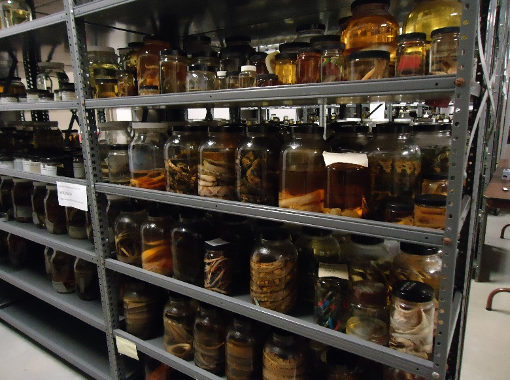
CMC Blog
What’s in the jar?
By: Heather Farrington, Curator of Zoology
The Zoology collections at Cincinnati Museum Center are divided into “fluid” and “dry” collections. The fluid collection space is one of my favorites at the museum – it is equal parts creepy and fascinating for most visitors. In the dry collections, specimens are typically skinned (removing all the organs and soft tissue), stuffed, and dried. However, in the fluid collections, organisms are typically preserved intact and stored in a jar containing preservative fluid (alcohol or formalin, alcohol being the modern standard). The most common specimens to preserve in this manner are reptiles, amphibians, and fish, but CMC has a fluid spider collection and some other random invertebrates. There are both pros and cons for this method of preservation. On the plus side, specimens are often flexible (allowing for movement at joints) which aids in taking physical measurements, organs remain in place for internal examination, and gut contents are preserved along with the specimen. Unfortunately, amphibians and fish typically lose coloration in fluid storage. Also, exposure of specimens to formalin damages DNA, making genetic analysis of fluid preserved specimens difficult. Now that researchers know the importance of DNA, a tissue sample is often collected and frozen prior to preserving the whole specimen in fluid. Labeling specimens is also a challenge, as paper and ink used for labels need to be alcohol resistant for long-term storage.
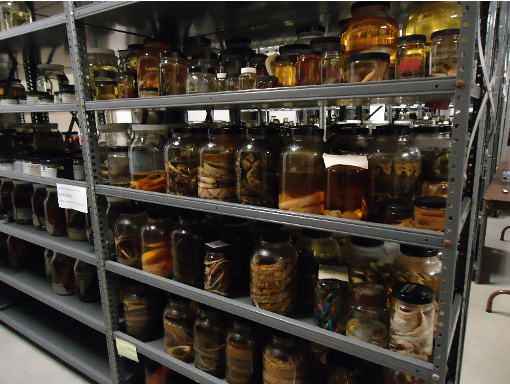
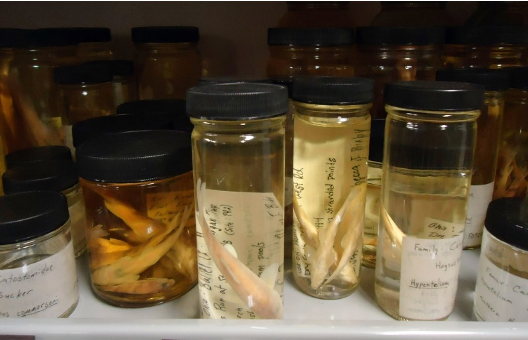
With thousands of jars of flammable alcohol and formalin in the collection space, the storage area is designed to limit the risk of jars breaking or fumes igniting in the room. Our shelving units are installed with shelves upside down so that there is a lip to block jars from sliding off, and the tops of the shelving units are bracketed together to prevent any shelving from tipping over – you can see some of these details in the accompanying pictures. We also have spark-free lighting and no electrical outlets in the main collection area. In case there is a spill, we have special clean-up kits and fire extinguishers, if needed.
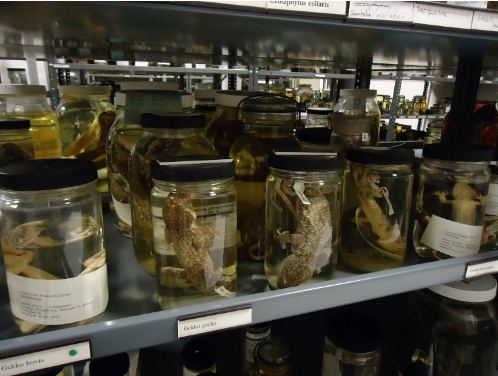
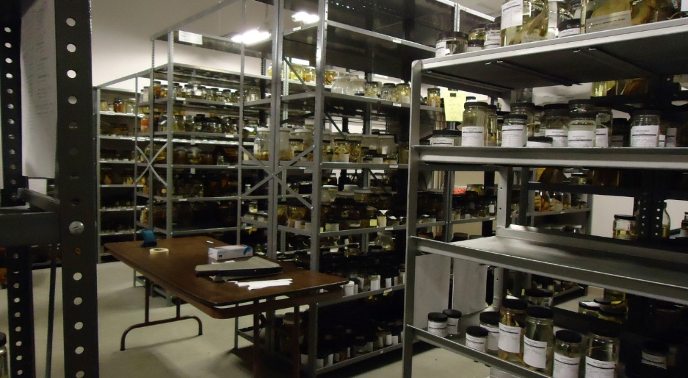
Current projects in the fluid collection include replacing old jars and deteriorating rubber seals with new ones, cataloging specimens donated by several Kentucky universities, updating hand-written labels with printed ones, and updating taxonomy for species that have had changes to their scientific names. We hope to recruit a summer intern to organize our fluid teaching collection this summer to help facilitate use of these specimens in educational programs. There’s never a shortage of things to do in the fluid collection!
Museum Admission
Includes Cincinnati History Museum, Museum of Natural History & Science and The Children’s Museum.
| Adult (13+): | |
| Senior (60+): | |
| Child (3-12): | |
| Member Adult: | FREE |
| Member Child: | FREE |
Members receive discounts!
Become a Member today to save on programs, exhibits and films throughout CMC.
Museum Hours
Open Thursday – Monday
10 a.m. to 5 p.m.
Closed Tuesday and Wednesday
Closed Thanksgiving Day and Christmas Day
Member’s-only early entry: Saturdays at 9 a.m.
Customer Service Hours:
Monday – Sunday, 9 a.m. to 5 p.m.
